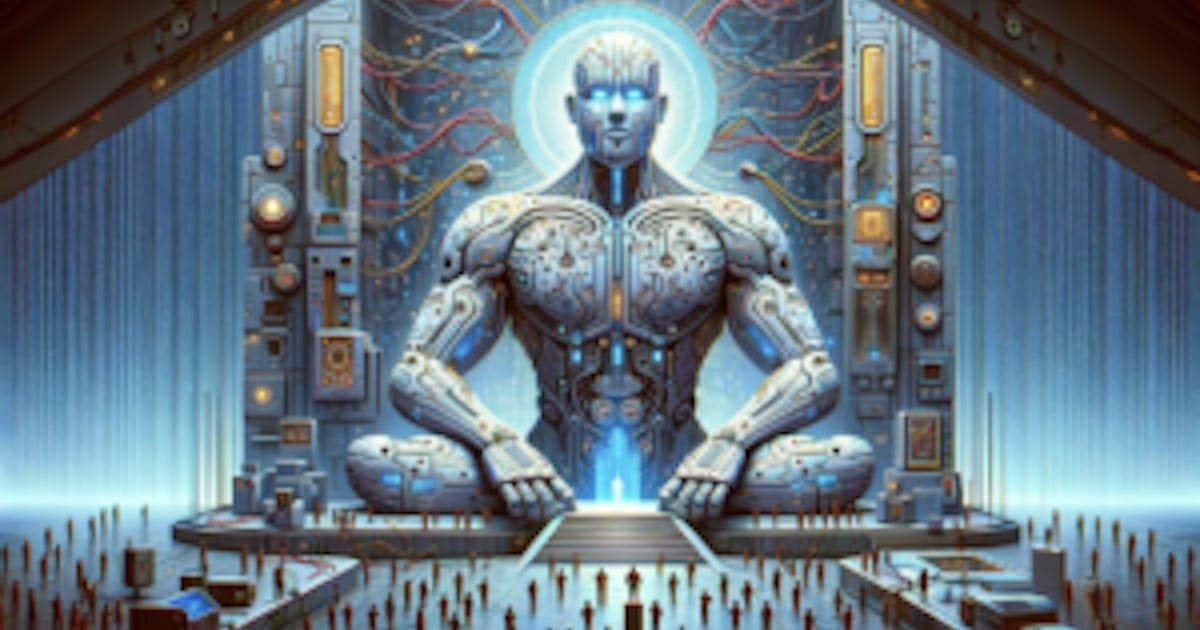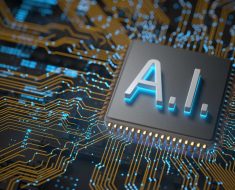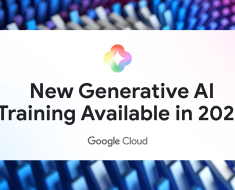
In computer science, oracles are external sources of information made available to otherwise self-contained algorithmic processes. Oracles are in effect “black boxes” that can produce a solution for any instance of a given problem, and then supply that solution to a computer program or algorithm. For example, an oracle that could provide tomorrow’s price for a given stock could be used in an algorithm that today — with phenomenal returns — executes buy-and-sell orders for that stock. Of course, no such oracle actually exists (or if it does, it is a closely guarded secret).
The point of oracles in computer science is not whether they exist but whether they can help us study aspects of algorithms. Alan Turing proposed the idea of an oracle that supplies information external to an algorithm in his 1938 doctoral dissertation. Some oracles, like tomorrow’s stock predictor, cannot be represented algorithmically. Others can, but the problems they solve may be so computationally intensive that no real-world computer could solve them. The concept of an oracle is important in computer science for understanding the limits of computation.
“Sing, Goddess, of the Anger of Achilles”
Turing’s choice of the word “oracle” was not accidental. Historically, oracles have denoted sources of information where the sender of the information is divine and the receiver is human. The Oracle of Delphi stands out in this regard, but there’s much in antiquity that could legitimately count as oracular. Consider, for instance, the opening of Homer’s Iliad: “Sing, goddess, of the anger of Achilles, son of Peleus.” The goddess here is one of the muses, presumably Calliope, the muse of epic poetry. In the ancient world, the value of artistic expression derived from its divine inspiration. Of course, prophecy in the Bible also falls under this conception of the oracular, as does real-time divine guidance of the believer’s life (as described in Proverbs 3:5–6 and John 16:13).
Many of us are convinced that we have received information from oracles that can’t be explained in terms of everyday communication among people or everyday operations of the mind. We use many words to describe this oracular flow of information: inspiration, intuition, creative insight, dreams, reverie, collective unconscious, etc. Sometimes the language used is blatantly oracular. Einstein, for instance, told his biographer Banesh Hoffmann, “Ideas come from God.” Because Einstein did not believe in a personal God (Einstein would sometimes say he believed in the God of Spinoza), Hoffmann interpreted Einstein’s remark metaphorically to mean, “You cannot command the idea to come. It will come when it’s good and ready.”
The Greatest Mathematician of His Age
Now granted, computational reductionists will dismiss such oracular talk as misleading nonsense. Really, all the information is there in some form already in the computational systems that make up our minds, and even though we are not aware of how the information is being processed, it is being processed nonetheless in purely computational and mechanistic ways. Clearly, this is what computational reductionists are bound to say. But the testimony of people in which they describe themselves as receiving information from an oracular realm needs to be taken seriously, especially if we are talking about people of the caliber of Einstein. Consider, for instance, how Henri Poincaré (1854–1912) described the process by which he made one of his outstanding mathematical discoveries. Poincaré was the greatest mathematician of his age (in 1905 he was awarded the Bolyai Prize ahead of David Hilbert). Here is how he described his discovery:
For fifteen days I strove to prove that there could not be any functions like those I have since called Fuchsian functions. I was then very ignorant; every day I seated myself at my work table, stayed an hour or two, tried a great number of combinations and reached no results. One evening, contrary to my custom, I drank black coffee and could not sleep. Ideas rose in crowds; I felt them collide until pairs interlocked, so to speak, making a stable combination. By the next morning I had established the existence of a class of Fuchsian functions, those which come from the hypergeometric series; I had only to write out the results, which took but a few hours. Then I wanted to represent these functions by the quotient of two series; this idea was perfectly conscious and deliberate, the analogy with elliptic functions guided me. I asked myself what properties these series must have if they existed, and I succeeded without difficulty in forming the series I have called theta-Fuchsian.
Just at this time I left Caen, where I was then living, to go on a geologic excursion under the auspices of the school of mines. The changes of travel made me forget my mathematical work. Having reached Coutances, we entered an omnibus to go some place or other. At the moment when I put my foot on the step the idea came to me, without anything in my former thoughts seeming to have paved the way for it, that the transformations I had used to define the Fuchsian functions were identical with those of non-Euclidean geometry. I did not verify the idea; I should not have had time, as, upon taking my seat in the omnibus, I went on with a conversation already commenced, but I felt a perfect certainty. On my return to Caen, for conscience’ sake I verified the result at my leisure.
Again, the computational reductionist would contend that Poincaré’s mind was in fact merely operating as a computer. Accordingly, the crucial computations needed to resolve his theorems were going on in the background and then just happened to percolate into consciousness once the computations were complete. But the actual experience and self-understanding of thinkers like Einstein and Poincaré, in accounting for their bursts of creativity, is very different from what we expect of computation, which is to run a computer program until it yields an answer. Humanists reject such a view of human creativity. Joseph Campbell, in The Power of Myth, offered this rejoinder to computational reductionism: “Technology is not going to save us. Our computers, our tools, our machines are not enough. We have to rely on our intuition, our true being.” Of course, artists of all stripes have from ages past to the present invoked muses of one form or another as inspiring their work.
A Clash of Worldviews?
Does this controversy over the role of oracles in human cognition therefore merely describe a clash of worldviews between a humanism that refuses to reduce our humanity to machines and a computational reductionism that embraces such a reduction? Is this controversy just a difference in viewpoints based on a difference in first principles? In fact, oracles pose a significant theoretical and evidential challenge to computational reductionism that goes well beyond a mere collision of worldviews. Computational reductionism faces a deep conceptual problem independent of any worldview controversy.
Computational reductionism faces an oracle problem. The problem may be described thus: Our most advanced artificial intelligence systems, which I’m writing about in this series about Artificial General Intelligence (AGI), require input of external information to keep them from collapsing in on themselves. This problem applies especially to large language models (LLMs) and their most advanced current incarnation, ChatGPT-4. I’m not talking here about the role of human agency in creating LLMs, which no one disputes. I’m not even talking here about all the humanly generated data that these neural networks ingest or all the subsequent training of these systems by humans. What I’m talking about here is that once all this work is done, these systems cannot simply be set loose and thrive on their own. They need continual propping up from our human intelligence. For LLMs, we are the oracles that make and continue to make them work.
The Death Knell for AGI
The need for ongoing human intervention in these systems may seem counterintuitive. It is also the death knell for AGI. Because if AGI is to succeed, it must surpass human intelligence, which means it must be able to leave us behind in the dust, learning and growing on its own, thriving and basking in its own marvelous capabilities. Like Aristotle’s unmoved mover God, who does not think about humanity or anything other than himself because it is in the nature of God only to think about the highest thing, and the highest thing of all is God. Thus, the Aristotelian God spends all his time contemplating only himself. A full-fledged AGI would do likewise, not deigning to occupy itself with lesser matters. (As an aside, AGI believers might take comfort in an AGI being so self-absorbed that it would not bother to destroy humanity. But to the degree that flesh-and-blood humans are a threat, or even merely an annoyance, to an AGI, it may be motivated to kill us all so as not to be distracted from contemplating itself!)
Unlike the Aristotelian God, LLMs do not thrive without human oracles continually feeding them novel information. There are sound mathematical reasons for this. The neural networks that are the basis for LLMs reside in finite dimensional vector subspaces. Everything in these spaces can therefore be expressed as a linear combination of finitely many basis vectors. In fact, they are simplexes and the linear combinations are convex, implying convergence to a center of mass, a point of mediocrity. When neural networks output anything, they are thus outputting what’s inherent in these predetermined subspaces. In consequence, they can’t output anything fundamentally new. Worse yet, as they populate their memory with their own productions and thereafter try to learn by teaching themselves, they essentially engage in an act of self-cannibalism. In the end, these systems go bankrupt because intelligence by its nature requires novel insights and creativity, which is to say, an oracle.
Research backs up this claim that LLMs run aground in the absence of oracular intervention, and specifically external information added by humans. This becomes clear from the abstract of a recent article titled “The Curse of Recursion: Training on Generated Data Makes Models Forget“:
GPT-2, GPT-3(.5) and GPT-4 demonstrated astonishing performance across a variety of language tasks… What will happen to GPT-{n} once LLMs contribute much of the language found online? We find that use of model-generated content in training causes irreversible defects in the resulting models, where tails of the original content distribution disappear. We refer to this effect as Model Collapse and show that it can occur in Variational Autoencoders, Gaussian Mixture Models and LLMs. We build theoretical intuition behind the phenomenon and portray its ubiquity amongst all learned generative models. We demonstrate that it has to be taken seriously if we are to sustain the benefits of training from large-scale data scraped from the web. Indeed, the value of data collected about genuine human interactions with systems will be increasingly valuable in the presence of content generated by LLMs in data crawled from the Internet.
Think of It This Way
LLMs like ChatGPT are limited by a fixed finite number of dimensions, but the creativity needed to make these artificial intelligence models thrive requires added dimensions. Creativity is always orthogonal to the status quo, and orthogonality, by being at right angles with the status quo, always adds new dimensions. Oracles add such creativity. Without oracles, artificial intelligence systems become solipsistic, turning in on themselves, rehashing only what is in them already, and eventually going bankrupt because they cannot supply the daily bread needed to sustain them. AGI’s oracle problem is therefore real and damning.
But if AGI faces an oracle problem, don’t humans likewise face an oracle problem? Suppose AGIs require human oracles to thrive. Yet if oracles are so important for creativity, don’t humans need access to oracles as well? But how, asks the computational reductionist, does the external information needed for human intelligence to thrive get to us and into us? A purely mechanistic world is a solipsistic world with all its information internal and self-generated. On mechanistic principles, there’s no way for humans to have access to such oracles.
But why think that the world is mechanistic? Organisms, as we’ve seen, give no signs of being mechanisms. And physics allows for an informationally porous universe. Quantum indeterminacy, for instance, cannot rule out the input of information from transcendent sources. The simplest metaphor for understanding what’s at stake is the radio. If we listen to a symphony broadcast on the radio, we don’t think that the radio is generating the music we hear. Instead, the radio is a conduit for the music from another source. Humans are such conduits. And machines need to be such conduits (for ongoing human intelligent input) if they are to have any real value to us.
Next and in conclusion, “Artificial General Intelligence: Destroying the Idol.”
Editor’s note: This article appeared originally at BillDembski.com.



